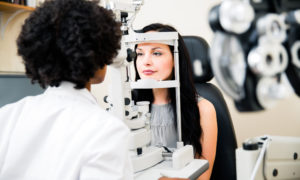August 28, 2019

The percentage of kids 13 to 16 years old who need glasses has nearly doubled in less than a decade, according to a new study from United Kingdom-based eyecare company Scrivens Opticians, Healthline reports.
All that ocular stimulation has apparently resulted in eye strain, blurred vision and shortsightedness.
The researchers say 35 percent of those ages 13 to 16 needed glasses in 2018. That’s up from 20 percent in 2012. Two-thirds of those children received diagnoses of nearsightedness.
New Resource
In the U.K., those children are spending 26 hours a week in front of an electronic screen, including televisions.
“Children’s eyes continue to grow until early adulthood — and their vision is changing, too,” Sheena Mangat, a Scrivens optometrist, said in a statement. “Because conditions such as short- or long-sightedness can happen gradually over time, neither children nor parents can see the signs, which is why regular eye checks are so important.”
Other Articles to Explore
The Scrivens’ study also found that 73 percent of parents surveyed said it’s a challenge to get their offspring to put away their devices for a few hours. More than a quarter of the parents also said they’ve never taken their child for an eye test.
“Parents always have a long back-to-school checklist, but getting your children’s eyes tested should be a priority,” Mangat said. “We don’t think twice about taking our kids to the (general practitioner) should they become ill or the dentist for regular checks but, arguably, an annual eye health examination is just as important.”
The American Optometric Association recommends the 20-20-20 rule, which says human eyes need a 20-second break from screens every 20 minutes to look at something 20 feet away. The organization also says users should take a 15-minute break for every two hours spent on a device.
Parents can also fight tech with tech. There’s light-filtering technology and device settings can be changed to control the amount of light bombarding sensitive eyes.

























